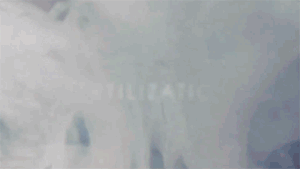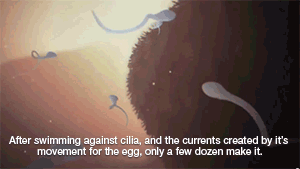Photo




DIPHTHERIA! KEEP OUT!
As with scarlet fever, diphtheria (Corynebacterium diphtheriae) only becomes the dread disease that was quarantined and feared after it becomes infected with a toxin-producing bacteriophage (bacteria-infecting virus). You can be infected with an uninfected strain of C. diphtheriae and not develop any illness - the disease itself requires both the virus AND bacteria (well, one inside the other, of course).
When C. diphtheriae starts exuding toxins, it’s not surprising that the disease was so frightening. Those toxins enter the cells of the nasopharynx and inhibit protein synthesis, which eventually causes apoptosis (cell death), localized necrosis, and inflammation from the body’s response to the dead and dying cells.
The Strangling Death
The combination of those exotoxins, and the body’s response to the bacteria and affected epithelial cells, creates diphtheria’s strangling effects. Bluish skin, cough, difficult and painful swallowing, and rapid difficult breathing are all a result of the swelling and pseudomembrane formation in the throat.
Despite antitoxins, antibiotics, and incredibly sophisticated intensive care units, this disease still kills nearly 10% of all patients, and 20% of those under five or over forty. Diphtheria can kill either by strangulation or overloading the organs of the body with toxins; when adults die of the disease, toxin overload is more common than strangulation. Even when patients survive, heart damage from myocarditis and lingering pain from peripheral neuropathy can continue to cause problems for months or years. Textbook of Pediatrics. Julius Parker Sedgwick and Carl Ahrendt Scherer, 1922.
1K notes
·
View notes
Photo

Whooping Cough Reaches Epidemic Proportions in California.
With more than 800 new cases reported in just the last two weeks, California has officially reached “epidemic proportions” of whooping cough (pertussis). Typically the state sees 80 to 100 cases a month. Babies are the most vulnerable.
As of June 10, there have been 3,458 cases reported to the California Department of Public Health (CDPH). That’s more than the number of reports for all of 2013, not to mention summer months are usually the worst.
Two-thirds of pertussis hospitalizations have been in children four months or younger, and two infant deaths have already been reported. “We urge all pregnant women to get vaccinated,” CDPH director Ron Chapman says in a statement. “We also urge parents to vaccinate infants as soon as possible.” That also goes for anyone who expects to be around newborns.
The first dose of the pertussis vaccine can be given when an infant reaches 6 weeks of age. Infants who are too young to be immunized, however, remain the most vulnerable to severe and fatal cases. All pregnant women, the department urges, should be vaccinated with Tdap in their third trimester for each pregnancy — the immunity will transfer to the baby, at least temporarily.
To be clear, whooping cough hasn’t been declared a public health emergency. When a disease exceeds anticipated levels, that’s when it’s considered an epidemic, according to CDPH’s Gil Chavez. Read the entire article here. Source: Los Angeles Times, I fucking love Science.
643 notes
·
View notes
Photo

How Our Brains Store Recent Memories, Cell by Single Cell Findings may shed light on how to treat neurological conditions like Alzheimer’s and epilepsy
Confirming what neurocomputational theorists have long suspected, researchers at the Dignity Health Barrow Neurological Institute in Phoenix, Ariz. and University of California, San Diego School of Medicine report that the human brain locks down episodic memories in the hippocampus, committing each recollection to a distinct, distributed fraction of individual cells.
The findings, published in the June 16 Early Edition of PNAS, further illuminate the neural basis of human memory and may, ultimately, shed light on new treatments for diseases and conditions that adversely affect it, such as Alzheimer’s disease and epilepsy.
“To really understand how the brain represents memory, we must understand how memory is represented by the fundamental computational units of the brain – single neurons – and their networks,” said Peter N. Steinmetz, MD, PhD, program director of neuroengineering at Barrow and senior author of the study. “Knowing the mechanism of memory storage and retrieval is a critical step in understanding how to better treat the dementing illnesses affecting our growing elderly population.”
Steinmetz, with first author John T. Wixted, PhD, Distinguished Professor of Psychology, Larry R. Squire, PhD, professor in the departments of neurosciences, psychiatry and psychology, both at UC San Diego, and colleagues, assessed nine patients with epilepsy whose brains had been implanted with electrodes to monitor seizures. The monitoring recorded activity at the level of single neurons.
The patients memorized a list of words on a computer screen, then viewed a second, longer list that contained those words and others. They were asked to identify words they had seen earlier, and to indicate how well they remembered them. The observed difference in the cell-firing activity between words seen on the first list and those not on the list clearly indicated that cells in the hippocampus were representing the patients’ memories of the words.
The researchers found that recently viewed words were stored in a distributed fashion throughout the hippocampus, with a small fraction of cells, about 2 percent, responding to any one word and a small fraction of words, about 3 percent, producing a strong change in firing in these cells.
"Intuitively, one might expect to find that any neuron that responds to one item from the list would also respond to the other items from the list, but our results did not look anything like that. The amazing thing about these counterintuitive findings is that they could not be more in line with what influential neurocomputational theorists long ago predicted must be true," said Wixted.
Although only a small fraction of cells coded recent memory for any one word, the scientists said the absolute number of cells coding memory for each word was large nonetheless – on the order of hundreds of thousands at least. Thus, the loss of any one cell, they noted, would have a negligible impact on a person’s ability to remember specific words recently seen.
Ultimately, the scientists said their goal is to fully understand how the human brain forms and represents memories of places and things in everyday life, which cells are involved and how those cells are affected by illness and disease. The researchers will next attempt to determine whether similar coding is involved in memories of pictures of people and landmarks and how hippocampal cells representing memory are impacted in patients with more severe forms of epilepsy.
Pictured: Human neuron showing actin formation in response to stimulation. Michael A. Colicos, UC San Diego
788 notes
·
View notes
Photo








remember guys, always look for professionals!
117K notes
·
View notes
Photo
Fucking Retard.

SOURCE1 SOURCE2 FULL-SIZE IMAGE SUBMITTER’S COMMENT: This girl is on my Facebook friends list. She is only 14 years old. She just posted a status and these pictures. Some other girl commented saying that it was stupid, and it will get infected. She replied that she knows, but she doesn’t care. She used the exact technique that you have on blast on your blog right now. She actually posted a picture of a pencil with needle stuck in the eraser. She didn’t even bother cleaning the needle before taking the picture. It’s all crusty and gross. WHAT’S AWFUL: Um, everything. First of all, she’s 14. Second, she did it herself using a pencil and a pin/sewing needle. Third, it looks like she did it in her bathroom. Fourth, it’s just terrible looking.
HOW IT CAN BE FIXED: She’s going to have to wait. She can’t get it professionally fixed because she is underage. I’d say she should see a doctor because it will probably be infected by morning, if it isn’t already.
72 notes
·
View notes
Link
Behold! I am opening commissions ranging from $7 to $40.

Lineless color or black and white for $7.

Ponies(or similarly styled creatures) for $10.

Fullbody character lineart or 3 character expressions for $15.

Colored full body character illustration for $40.
Payment...
108 notes
·
View notes
Text
i dont understand how people can just get tattoos without even giving it a second thought i cant even find the commitment to stick a sticker somewhere
463K notes
·
View notes





























